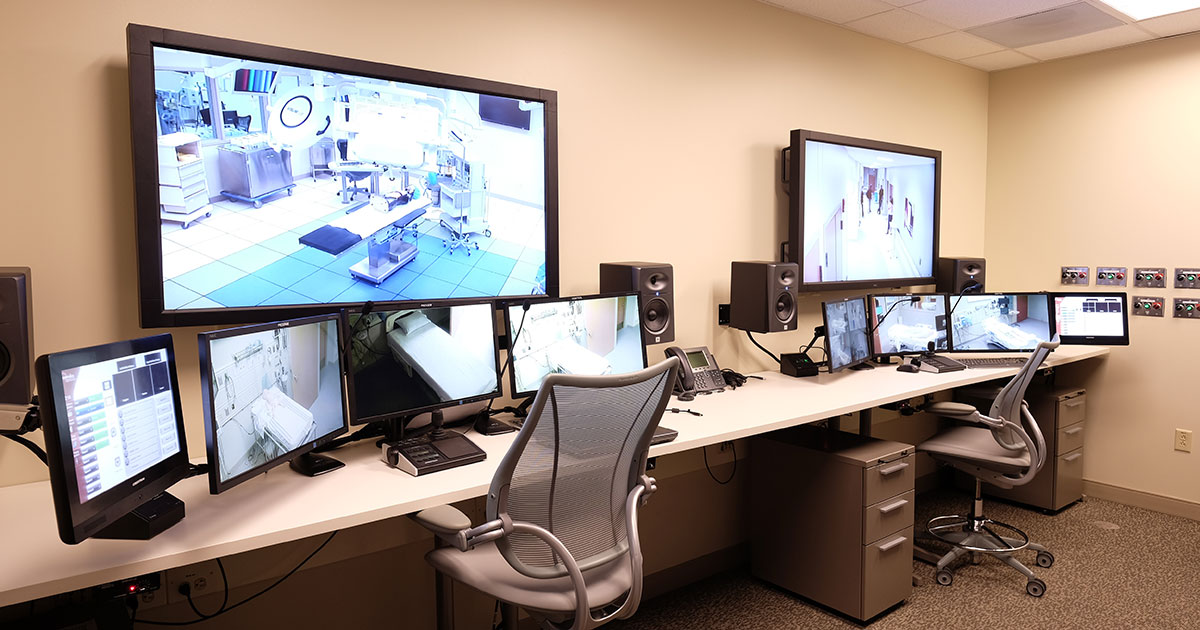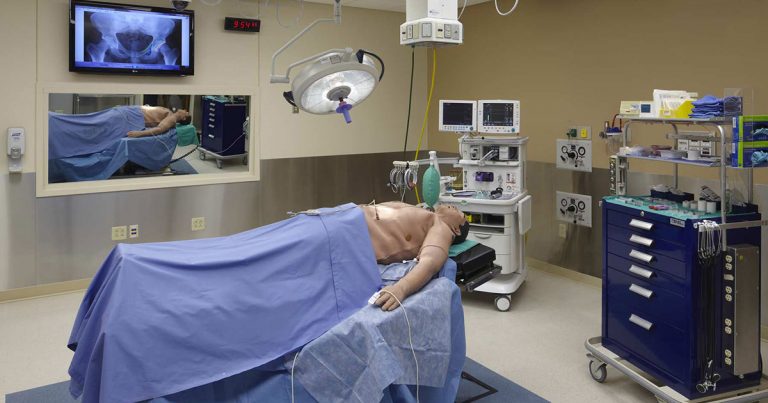Realistic medical simulation environments for healthcare education are important in teaching hospitals and professional training programs.
Audiovisual for Medical Simulation
Audiovisual systems design for Medical Simulation (MedSim) capture, tagging and review is a critical component to a successful program for Healthcare Simulation (Clinical Simulation, Nursing Simulation, Patient Simulation, or Surgical Simulation).
Healthcare Technology Challenges
The healthcare technology challenges are only part of the picture. Over the past decade I have been involved in the design of audiovisual systems for medical simulation facilities ranging from small nursing school spaces to full clinical facilities that included non-clinical residential spaces, ambulances, and helicopters, all the way through operative and ICU spaces. Each of these facilities has a shared set of logistical and educational challenges that need to be addressed by the audiovisual consultant, in concert with the multiple stakeholders and parties involved.

Consultant Roles
When engaged in a medical simulation facility project, it is important for the owner and architect to understand the role of the audiovisual consultant alongside the role of the medical simulation consultant. The AV consultant helps to design the technology that will facilitate the capture of the simulated clinical session and environment, as well as support the “debrief” review session (and even the further capture and review of the “debriefers”). We do not determine the teaching methods and desired outcomes of the simulations themselves. That is the role of the medical simulation consultant. We work side-by-side with them to determinate the technology that is appropriate to meet the instructional scenarios and outcomes they help to develop with the owner.
More than Audiovisual Hardware
We must also work to bridge the gap between the audiovisual systems in the space, and the software and hardware that forms the basis of the clinical simulation platforms in-use. This means that while there are cameras and microphones, loudspeakers and display monitors, as well as extensive hardware in the control rooms and debrief rooms, there is also the software that forms the basis for recording, controlling and meta-tagging the events of the simulated session. Those must be coordinated with the mannequins and related simulation hardware. There is also the role of coordinating the separate vendors for each of these systems – whose scope must be carefully defined to prevent gaps (or often, overlap). Typically, we see the AV Contractor, Capture Software Vendor, and Mannequin/Simulation Systems Vendors as both overlapping, competing and also separate entities whose scope of work must be carefully defined by the consultants to ensure cooperation and full integration of each’s system into the whole of the finished facility.
Experience Makes a Difference
Additionally, there are other matters of medical equipment planning. Front-of-house/back-of-house separation, handling of standardized patient flow, and the potential use of spaces for disaster support, as well as continuum of care scenarios may take advantage of the variety of simulated spaces in larger facilities. ABD’s experience in these areas can help ease the design process between the architect and owner, facilitate clear communication with the simulation consultant and various vendors, and ensure a smooth path to an operational simulation facility, no matter the size or flexibility required.
